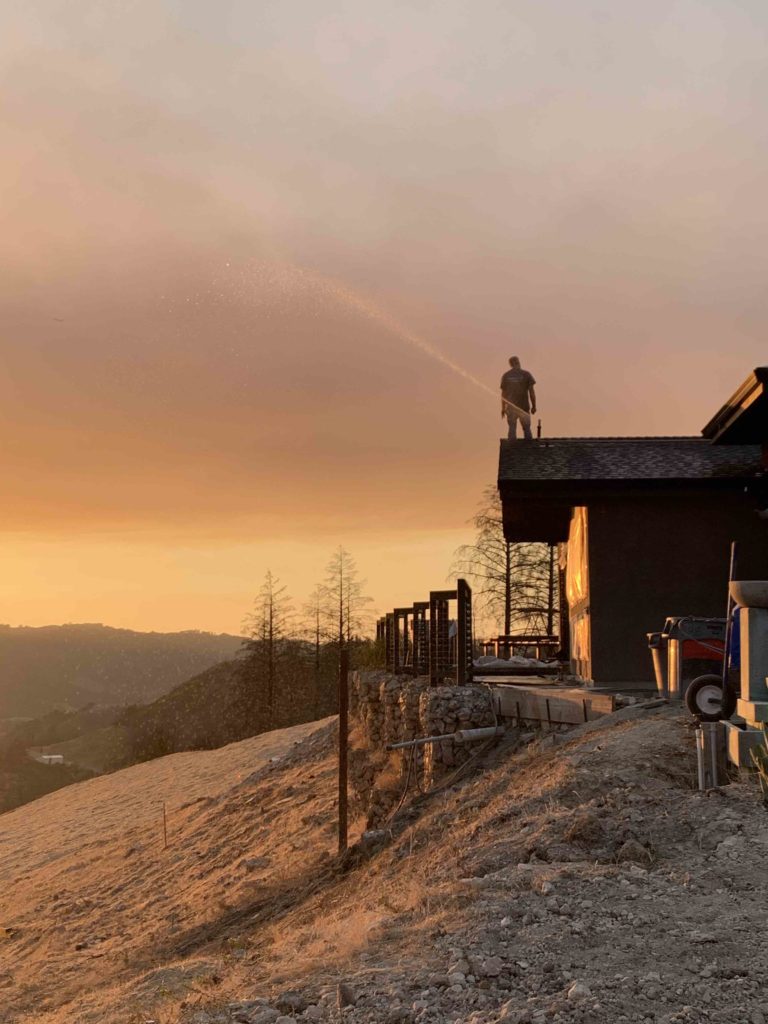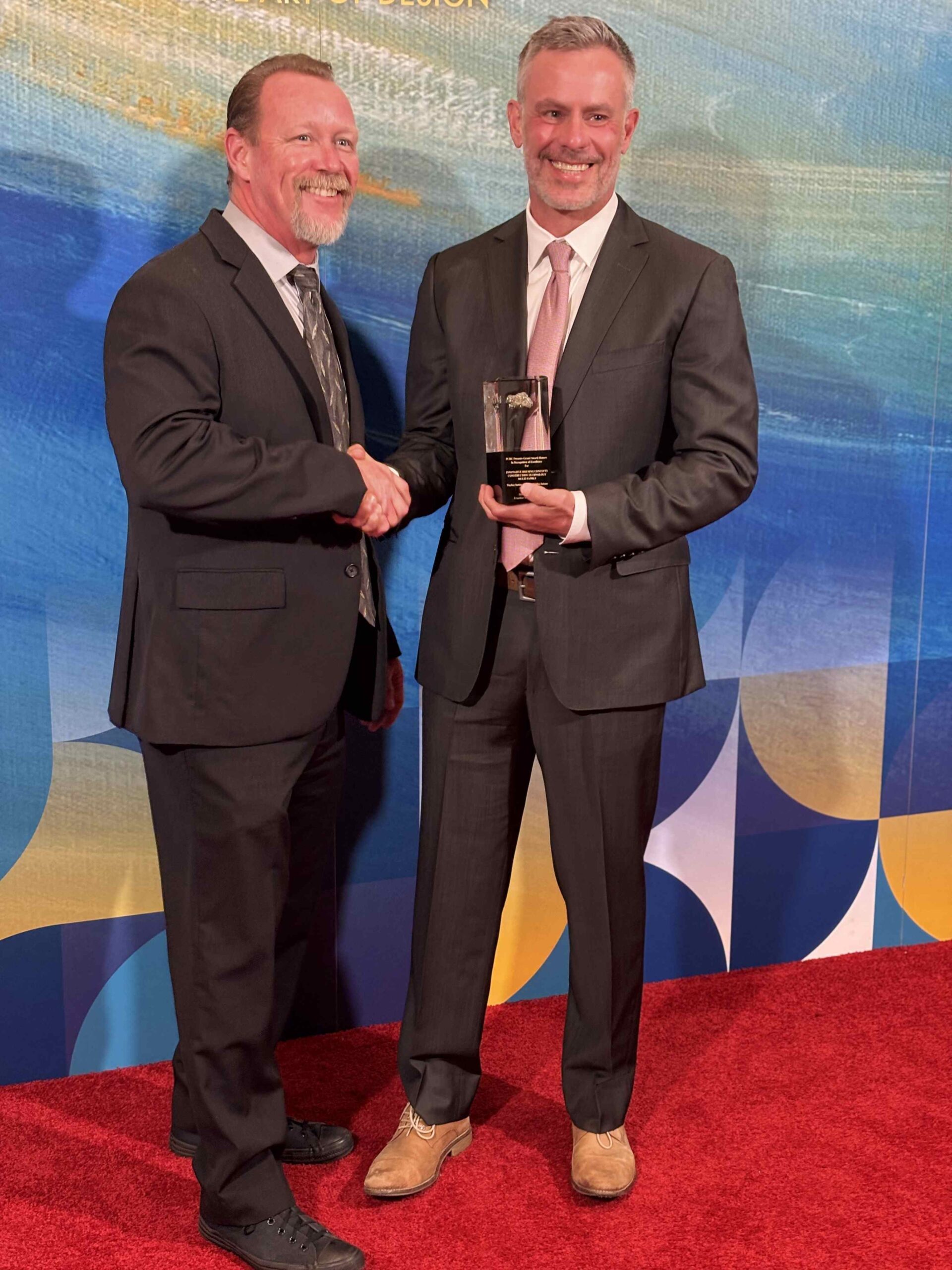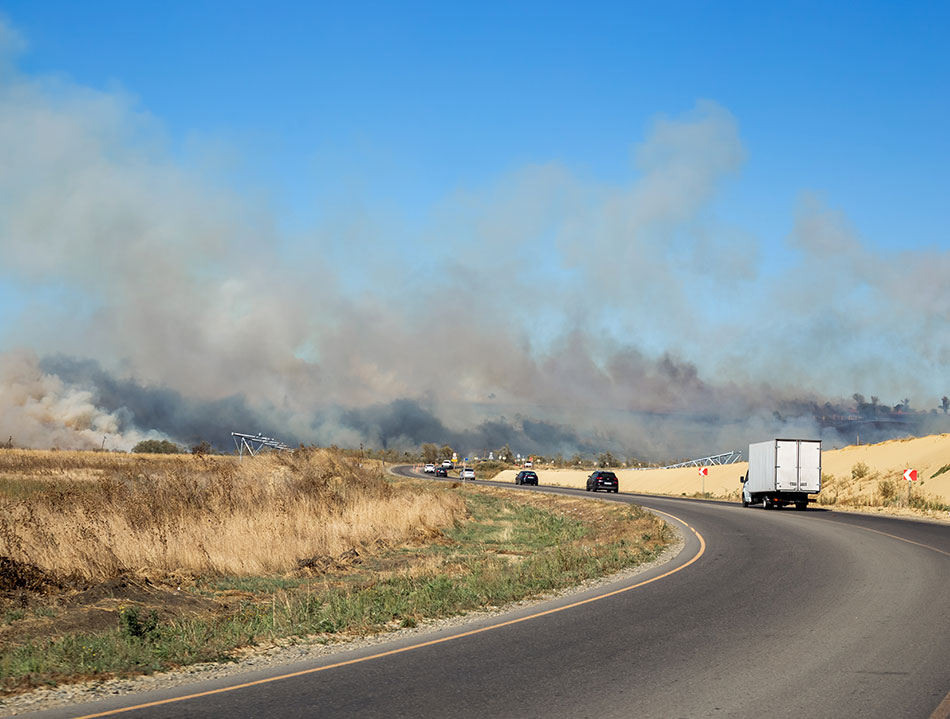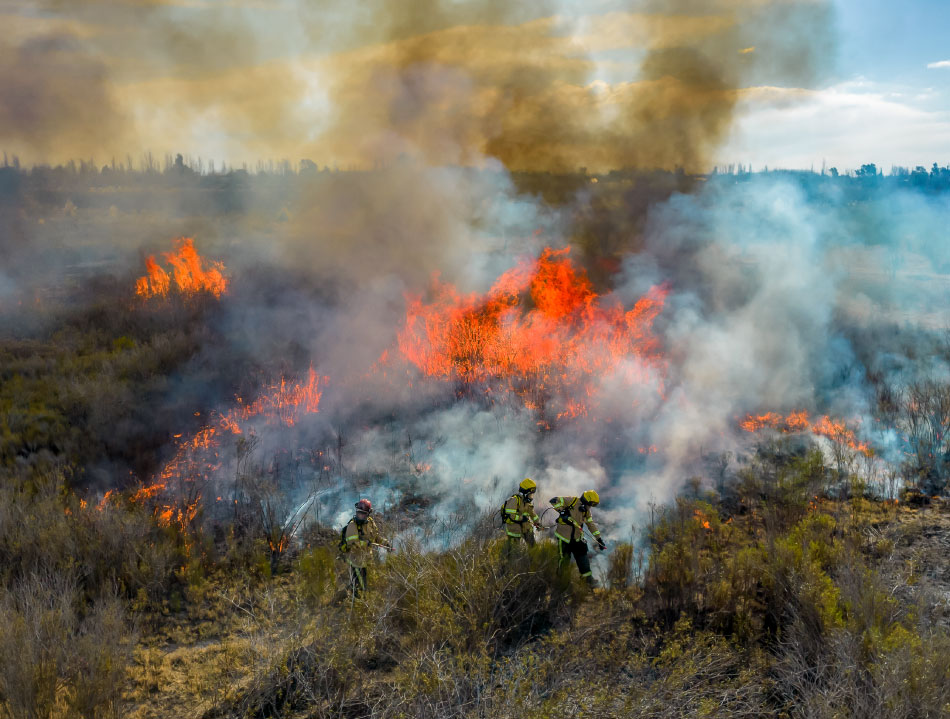
The wildland urban interface (WUI) is the name given to the edge of human development, where homes and businesses border undeveloped, largely wild, land.
Many people seek to escape the hustle and bustle of city life. They’re drawn to living near the beauty of natural landscapes within forests, in the foothills of scenic mountain ranges, or in the pastoral countryside. Homes in these areas are also cheaper because they’re further out from the urban center.
The pressure is on for suburbs to sprawl and grow further from urban centers, gobbling up the countryside. The result is more people coming into contact with rural and wild ecosystems and an ever-expanding WUI.
While the allure of life in the outskirts of development is strong, the natural beauty of WUI areas masks potential dangers and threats to your home.
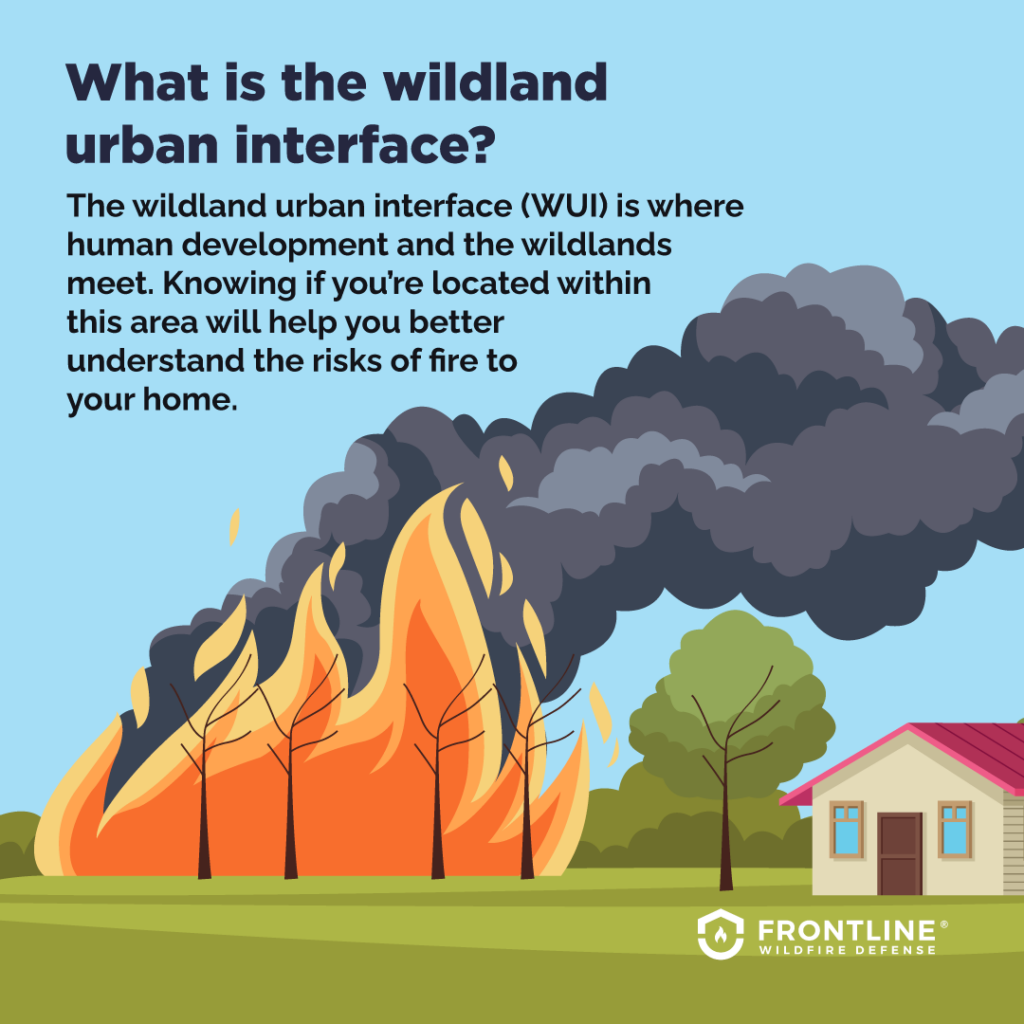
What is the WUI?
People might not know the term, but knowing if your home is within this zone will help you better understand the risks to it.
A classic definition of WUI is where human development and the wildlands meet. In addition to the WUI there are areas classified as intermix. This is where you find homes and businesses dotted throughout a wild or rural area. Explore this map of WUI and intermix areas around the world to see where they exist. California is the state with the most homes in WUI areas, followed by Texas and Florida, according to FEMA. With a rapidly growing population in these areas, it’s important to understand the issues of life in the WUI and their potential resolutions—chief among these being wildfire threats.
Interface vs. intermix in wildland urban settings
There are two different types of WUI zones, which are defined based on the amount of vegetation in them and housing density: interface and intermix.
In an interface area, you have a high density of homes and businesses within the reach of undeveloped acreage, generally 1.5 miles away from developed areas and urban centers. In an intermix area, houses and businesses are located within wildlands with a density greater than one home or business for every 40 acres of open land. Some 9.3% of U.S. continental land in use is now classified as being within intermix and interface areas.When defining these zones, fire officials look at cities and developments in proximity to vegetation that may provide fuel for potential fires. As an individual homeowner, you can look at your structures and their vulnerability to the brush and trees around your home—with the understanding that burning embers can travel many miles from a wildfire and onto your roof.
How many homes are in WUI areas?
In the continental US, 39% of all houses, or nearly 45 million housing units, are in WUI areas. The WUI is an area of human and environmental proximity and sometimes conflict. Some of the negative aspects of the interface are habitat fragmentation, interactions with wildlife, and the threat of wildfire.
How do you know if you’re in a WUI area?
Use this map to explore your area in detail and see whether your house is in a WUI area. You can also add layers of information, such as wildfire hazard potential and risk to communities.
The WUI in California
Areas where human development intermingles with wildland are common in California, which ranks as the state with the most houses in the WUI.
Homes in close proximity to wildland are more at risk of fire than homes in built-up urban areas. Wildfires have always been a natural part of most California ecosystems. Weather cycles alternate rainy years that promote the growth of vegetation, followed by times of drought that turn that vegetation into dry fuel for wildfires. Climate change has contributed even further to the increase in wildfires in California.
A growing population and increased infrastructure in wildfire-prone areas bring residents and nature into conflict more now than ever before. As a result, more people and buildings are at risk.
How many people live in the WUI in California?
32-40% of California housing units are located in the WUI, representing $1.3 trillion in real estate. Between 1990 and 2010, population growth in these areas topped 41%, and growth still continues. While no current population figures exist, the last count in 2010 showed over 11 million people living in the WUI in California. California’s population is expected to grow 14% by 2050, further impacting housing development in the WUI.
The risks of living in the wildland urban interface
People living in a wildland urban interface face many risks. The greatest of these is wildfire. Residents of these newly built areas may not realize they’ve chosen to live in an environment that experiences regular natural wildfires.
With an increased WUI population comes an increase in human-caused wildfire, upping the risk. The wildfire threat is further heightened by the materials used to build these homes, the relative density of new developments bringing flammable structures closer together, and the non-native, and often invasive, species that crowd out burn-resistant vegetation. Eucalyptus trees from Australia, common in California residential areas, are an example of a highly flammable, invasive, non-native tree that produces a large volume of flammable debris.
While regular wildfires on open land are common and natural to the ecosystem, keeping fuel levels from building up through controlled burns is not possible or safe near residential neighborhoods. The result is dense vegetation in the WUI, ready to burn. And with firefighting in WUI areas more difficult, flames can quickly overwhelm entire neighborhoods.
Why is the wildland urban interface a major challenge for firefighters?
Firefighting in WUI areas is challenging. Toxic materials in burning homes combine with toxins in fire suppression materials to create greater health risks than fighting wildfires in wildland areas.
Bringing together enough resources with the right training requires reaching beyond the neighborhood fire department. The training, equipment, and manpower to put down a kitchen grease fire is far different than what is needed to contain a neighborhood-wide or even town-wide fire.
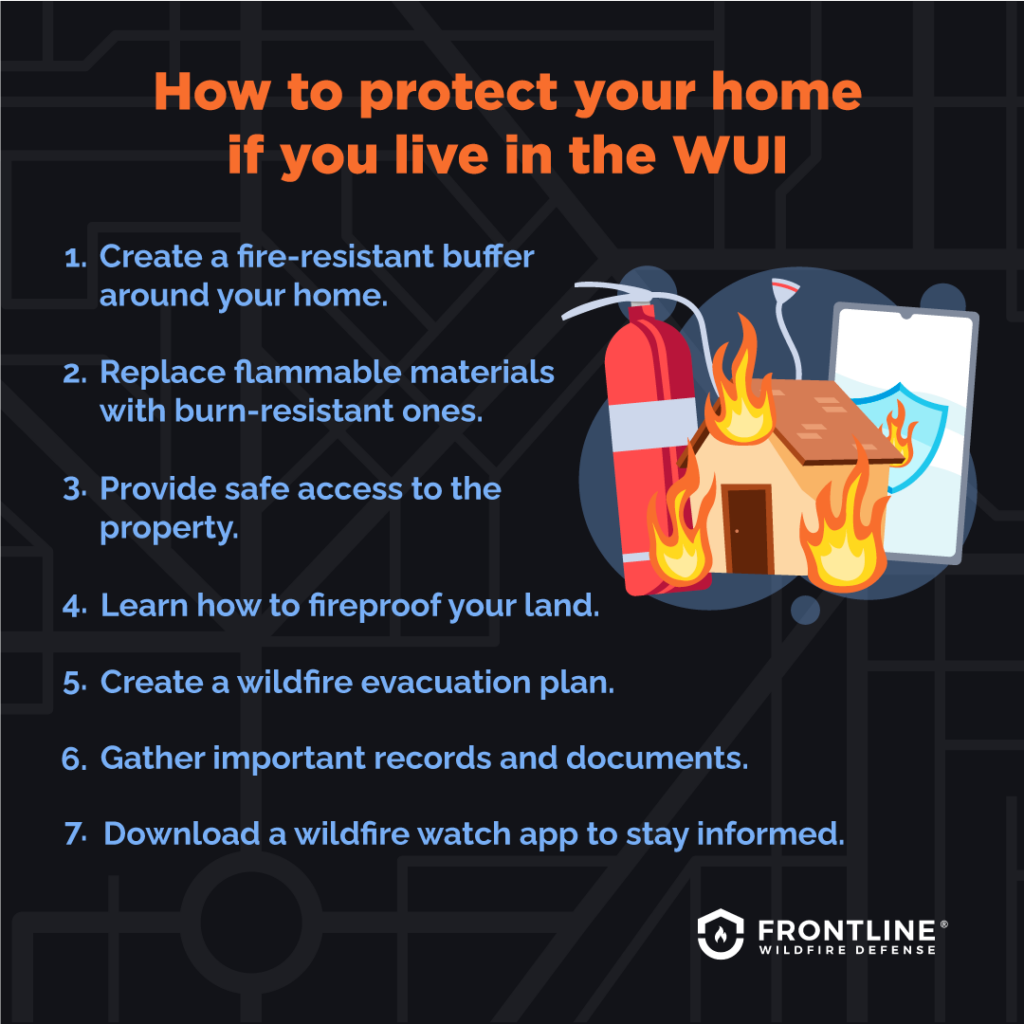
What can you do to protect your home in the WUI?
If you live in the wildland urban interface, you have to deal with a very real risk. You need to take on the responsibility to protect your family, property, and surrounding environment from wildfire. Relying on over-stretched firefighters has proven to be insufficient.
To start, learn as much as you can about creating a fire-resistant buffer around your home and outbuildings. This includes replacing flammable materials and vegetation with burn-resistant ones whenever possible. Learn about defensible space landscaping and how to make your land more fire resistant. And provide for safe access to the property for firefighters and others. You should also create a wildfire evacuation plan and engage every member of the family so they know what to do and how to help if your home is threatened. Document your property, including providing receipts, appraisals, and pictures of your buildings, in case you need to make an insurance claim. Store these and other important documents in a location other than your home. Lastly, download a wildfire watch app to stay informed and to give yourself as much advance warning of danger as possible.
Take the extra step to protect your home
Living in the WUI in California means that your property and personal belongings are at risk of wildfire. You can mitigate that risk by adding extra protection to your home with systems that actively safeguard it in a fire. As a responsible homeowner living in the WUI, defend your home against wildfires by investing in a Frontline Wildfire Defense system.
